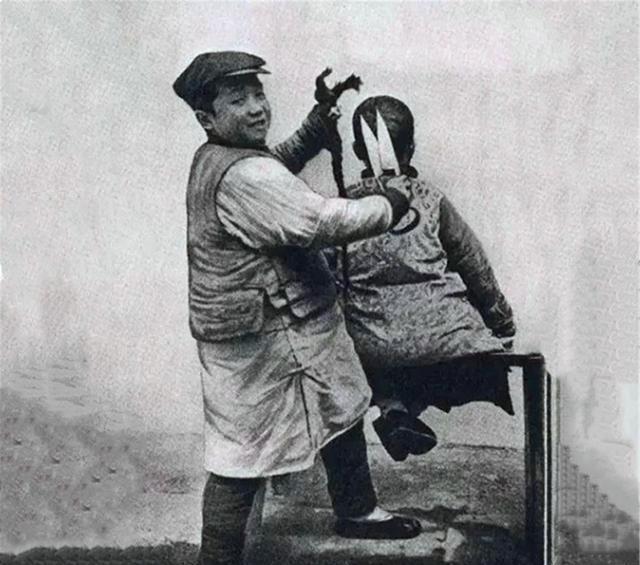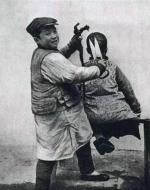Created by Shiqi Deng on Sun, 10/11/2020 - 20:14
Description:
Queue or cue was a hairstyle worn by the Jurchen and Manchu people of Manchuria. Later, the queue was forcefully introduced to Han Chinese and required to be worn by the male during the Qing dynasty. The queue was a symbol of Manchu identity. However, the queue was not only a representation of different dynasty identities in China, it was also a representation of racial issues later around the world. A nineteenth-century Britisher disabused readers: “the tail of a Chinaman is not a little tuft on the crown of his head, but is formed of hair suffered to grow luxuriantly in a mass, at least four inches in diameter.” From a Chinese point of view, it was their nation's humiliation in the Sino-Japanese War of 1895, which caused Sun Yat-sen and many of his associates to lose faith in the Qing dynasty. He recalled: “I cut off my cue which had been growing all my life. For some days I had not shaved my head, and I allowed the hair to grow on my upper lip.” The Qing dynasty of the Manchus is seen as a “foreign” dynasty by the Chinese. This idea was especially important when the Boxer Rebellion. During the time of the Boxer Rebellion, the queue had become a symbol of shame to the Boxers and Chinese nationalists in the late 19th century. The Western countries called the queue “the pigtail” disrespectfully. As a symbol of revolution, Chinese males cut off the long braids or queues. They had been forced to wear as a sign of submission to the Manchus's authority. The dynastic authority cannot serve as a focal point for national mobilization against the West, as the emperor was able to do in Japan in the same period. With the growth of Western ideas and influences in China, the development of the Chinese's national spirit started to have the determination to abandon the queue. When the Qing dynasty was in danger of being toppled by revolutionaries, the Chinese in a gesture of defiance and practicality, severed their own tails. Thus, removing the "queue" or "pigtail" became one of the better-known symbols of the fall of imperial rule, modernization, and political change.
Sources:
Michael R. Godley, "The End of the Queue:Hair as Symbol in Chinese History", 27, September 2011, http://www.chinaheritagequarterly.org/features.php?searchterm=027_queue....


